Spring Boot手把手教学(13):如何自定义开启定时任务
- 1、前言
- 2、添加自定义属性
- 3、定时任务开关
-
4、切换不同环境
- 4.1、 dev
- 4.2、test
- 4.3、prod
1、前言
前面我们讲了定时任务,并且实例说明如何利用爬虫获取天气信息并定时发邮件提醒;
那么假设我们有三种环境分别是:dev(本地开发环境)、test(UAT测试环境) 和 prod(生产环境);
那么如何根据不同环境决定是否激活定时任务呢?
如果不知道如何自定义三种环境,请参考之前的文章; Spring Boot手把手教学(2):使用yml多环境配置和创建多环境profile打包
2、添加自定义属性
Pom.xml
默认Dev环境
<profiles>
<profile>
<!-- 开发环境 -->
<id>dev</id>
<properties>
<profileActive>dev</profileActive>
</properties>
<!-- 默认激活的环境 -->
<activation>
<activeByDefault>true</activeByDefault>
</activation>
</profile>
<profile>
<!-- 测试环境 -->
<id>test</id>
<properties>
<profileActive>test</profileActive>
</properties>
</profile>
<profile>
<!-- 生产环境 -->
<id>prod</id>
<properties>
<profileActive>prod</profileActive>
</properties>
</profile>
</profiles>
复制代码src/main/resources/application.yml
spring:
profiles:
active: @profileActive@
复制代码src/main/resources/application-dev.yml
## 开启定时任务
scheduling:
enabled: false
复制代码src/main/resources/application-test.yml
## 开启定时任务
scheduling:
enabled: true
复制代码src/main/resources/application-prod.yml
## 开启定时任务
scheduling:
enabled: true
复制代码三种环境,分别添加自定义属性;
3、定时任务开关
com.scaffold.test.config.SchedulingConfig
添加定时任务配置
package com.scaffold.test.config;
import org.springframework.boot.autoconfigure.condition.ConditionalOnProperty;
import org.springframework.context.annotation.Configuration;
import org.springframework.scheduling.annotation.EnableScheduling;
/**
* 定时任务开关
*/
@Configuration
//启用定时任务
@EnableScheduling
//配置文件读取是否启用此配置
@ConditionalOnProperty(prefix = "scheduling", name = "enabled", havingValue = "true")
public class SchedulingConfig {
}
复制代码
这个时候我们把启动类上的 @EnableScheduling
单独移到了新建的配置类中,这样方便自定义控制;然后通过 @ConditionalOnProperty
启动自动获取配置属性 scheduling
,默认为true, 定时任务默认开启;
到此为止,如果在预想正确的情况:
dev环境:不开启
test环境:开启
prod环境:开启
复制代码那么如何判定呢?我们在之前的例子中,定时获取天气信息,间隔是1个小时,在启动server的时候,默认第一次执行,
所以,我们以此为依据进行判定是否生效;
4、切换不同环境
4.1、 dev
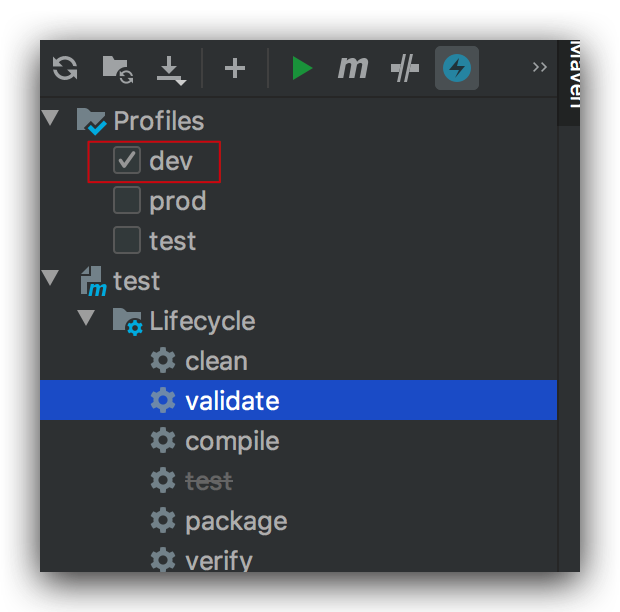
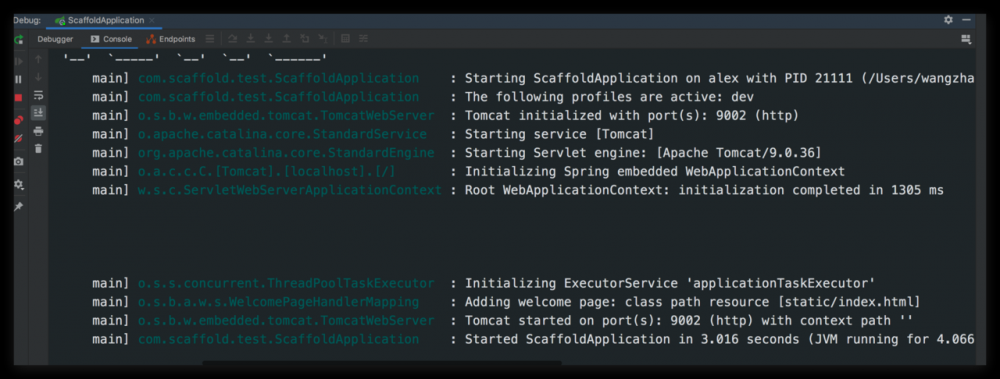
没有执行爬虫插入的sql, 所以,dev环境没有开启定时任务, 验证通过
;
4.2、test
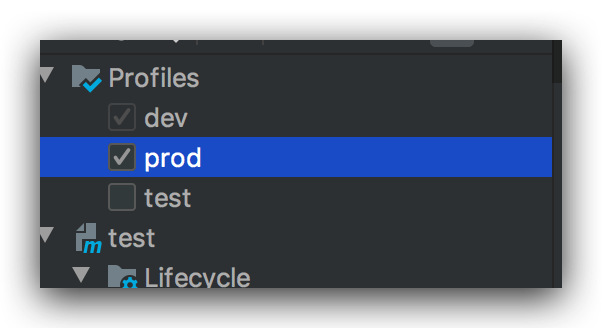
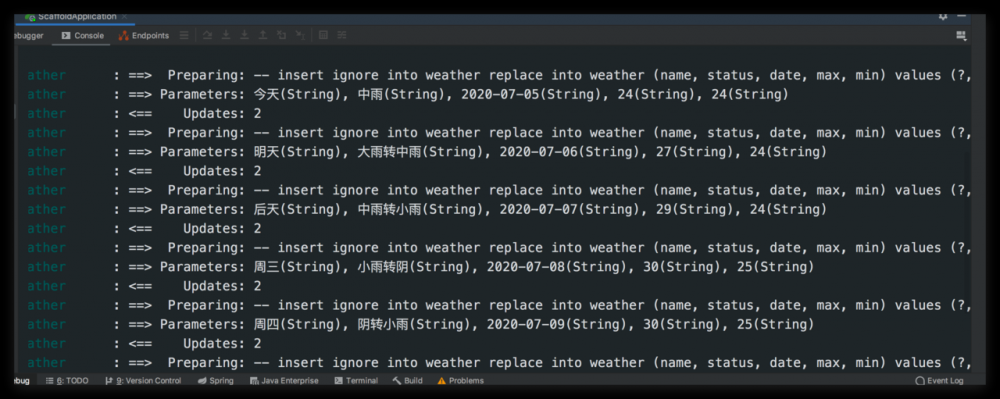
有sql执行,定时任务生效, 验证通过
;
4.3、prod
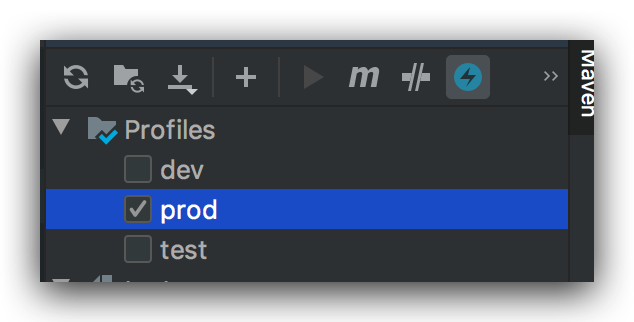
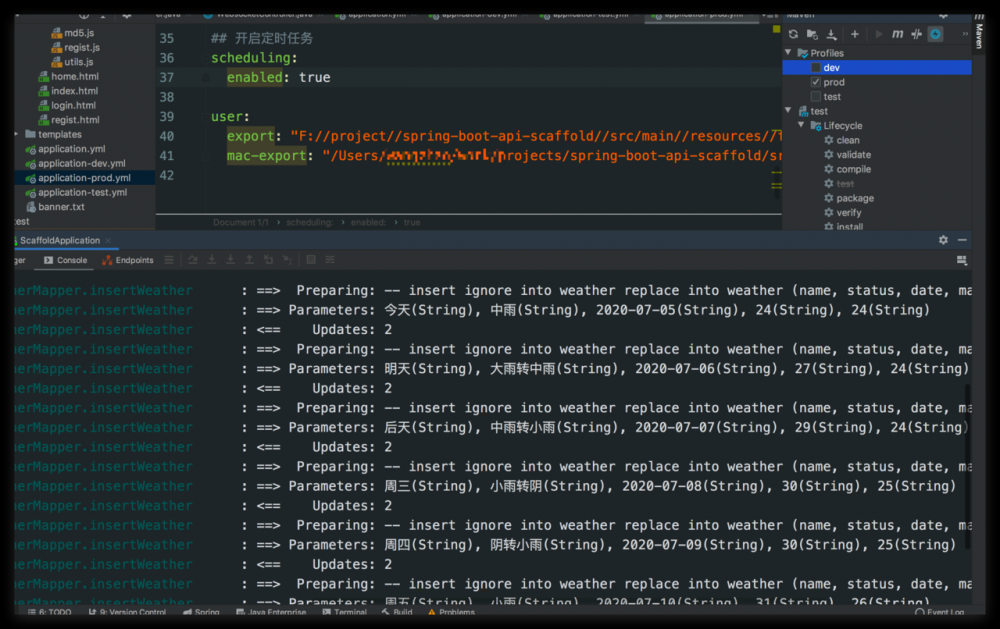
验证通过
;
到此为止,说明自定义激活定时任务的配置已经成功了,感兴趣的小伙伴赶紧去试试吧。
本文使用 mdnice 排版
正文到此结束
热门推荐
相关文章
Loading...











![[HBLOG]公众号](https://www.liuhaihua.cn/img/qrcode_gzh.jpg)

